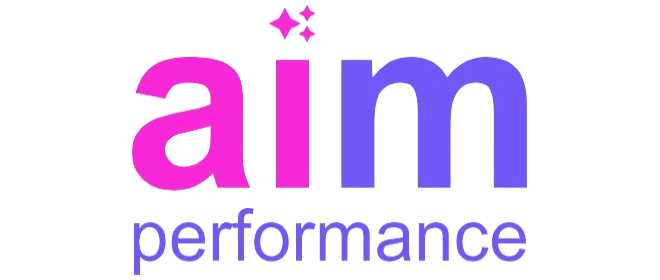In today’s fast-paced industrial environment, blue-collar employees are the backbone of many sectors, from manufacturing to construction. However, these roles often come with significant physical risks. Ensuring the safety of these employees is not only a moral obligation but also crucial for maintaining productivity and reducing costs associated with workplace injuries. One of the most effective tools for injury reduction is performance management. By leveraging performance management, organizations can identify risks, implement safety protocols, and continuously monitor for potential hazards.
Understanding Performance Management and Its Role in Safety
At its core, performance management is a continuous process that involves setting clear expectations, evaluating employee performance, and providing feedback. However, in the context of injury reduction for blue-collar workforce, performance management extends beyond productivity. It plays a pivotal role in ensuring that employees adhere to safety standards and protocols.
When performance management is applied to safety practices, it allows employers to track not only how well employees are meeting production goals but also how effectively they follow safety regulations. This dual focus on performance and safety ensures that organizations are not just achieving output targets but are doing so in a safe environment.
Identifying Workplace Hazards Through Performance Reviews
Regular performance reviews provide an opportunity to identify potential hazards that employees may face in their daily routines. By evaluating how tasks are being carried out, supervisors can identify unsafe practices that may lead to injury. This evaluation is crucial for injury reduction, as it highlights dangerous behaviors that could be mitigated before they lead to actual accidents.
For blue-collar workforce, these reviews are essential as they often perform physically demanding tasks that, if done incorrectly, can result in serious injury. By incorporating safety evaluations into performance reviews, employers can spot dangerous behaviors early on and provide immediate corrective action.
Enhancing Safety Training with Performance Management
One of the key benefits of performance management in injury reduction is its ability to highlight gaps in safety training. If employees are consistently failing to meet safety standards, this could indicate that current training programs are insufficient or not being properly enforced. Performance data can be used to revise and enhance training protocols to ensure that employees are fully equipped to perform their duties safely, leading to effective injury reduction.
For instance, if data reveals that a high number of injuries are related to improper machinery use, targeted training can be provided to reduce the risk of future accidents. This proactive approach ensures that training is tailored to actual workplace conditions and addresses the most pressing safety concerns.
Continuous Monitoring to Prevent Future Injuries
Performance management is an ongoing process, and this continuous monitoring allows for real-time identification of safety risks. Supervisors can regularly check in with employees to ensure they are adhering to safety protocols and provide immediate feedback if issues arise, ensuring continuous injury reduction.
In blue-collar environments, this is particularly important, as conditions can change rapidly, leading to new risks. For example, a construction site may present different hazards as work progresses, and continuous performance reviews allow supervisors to adjust safety measures as needed. By staying vigilant and responsive, organizations can significantly reduce the likelihood of accidents occurring.
Promoting a Culture of Safety
Performance management is not just about correcting unsafe behavior; it also involves recognizing and rewarding employees who consistently follow safety protocols. This positive reinforcement can help create a culture of safety where employees understand that their well-being is a top priority, fostering an environment focused on injury reduction.
When blue-collar employees see that their adherence to safety measures is valued, they are more likely to remain vigilant and continue following protocols. Over time, this culture of safety becomes ingrained in the workforce, leading to fewer injuries and a more secure work environment.
Using Data Analytics to Predict and Prevent Injuries
Incorporating data analytics into performance management can take injury reduction to the next level. By analyzing trends in performance data, employers can predict potential injury risks before they become serious issues. For instance, if a particular task is consistently associated with near-miss incidents, this can signal the need for a closer examination of that task and possible adjustments to safety protocols to ensure injury reduction.
In blue-collar work environments, where tasks are often repetitive, data-driven insights can be invaluable in preventing injuries that might otherwise go unnoticed. This proactive approach allows companies to address risks before they lead to actual harm, thereby keeping the workforce safer.
Tailoring Performance Management to Specific Job Roles
Different blue-collar roles come with different risks, and performance management allows for a tailored approach to safety and injury reduction. For example, the risks faced by a welder are vastly different from those faced by a forklift operator. A one-size-fits-all approach to safety won’t be effective in these scenarios, and targeted safety protocols can ensure better injury reduction outcomes.
By customizing performance evaluations based on specific job roles, companies can ensure that safety protocols are relevant and effective for each employee. This level of detail helps in reducing injuries as it ensures that all employees are trained and monitored according to the unique challenges of their roles.
Encouraging Employee Feedback for Better Safety
Performance management is a two-way process, and encouraging feedback from employees can provide valuable insights into potential safety risks. Blue-collar employees are often on the front lines of hazardous environments and may notice dangers that management overlooks. This feedback loop can be a powerful tool in injury reduction efforts.
By creating an open channel for employees to voice their concerns, companies can stay ahead of potential safety issues. Employees may have suggestions for improving safety protocols or identifying areas where more training is needed. Involving employees in the performance management process empowers them to take an active role in maintaining a safe work environment.
Reducing the Costs of Workplace Injuries
Injury reduction through effective performance management not only protects employees but also has financial benefits for organizations. Workplace injuries can be costly, both in terms of medical expenses and lost productivity. By reducing the incidence of injuries, companies can save on these costs while maintaining a healthier and more efficient workforce.
Moreover, fewer injuries mean fewer disruptions to the production process, ensuring that projects stay on schedule. In industries where deadlines are critical, such as construction or manufacturing, minimizing delays caused by injuries is key to maintaining profitability.
Conclusion: Performance Management as a Tool for Injury Reduction
In conclusion, performance management plays a crucial role in injury reduction among the blue-collar workforce. By incorporating safety into performance evaluations, enhancing training programs, promoting a culture of safety, and using data-driven insights, companies can significantly decrease the risk of workplace accidents. This not only protects employees but also improves overall productivity and reduces costs associated with injuries, achieving long-term injury reduction.
By continuously monitoring and adjusting safety protocols through performance management, companies create a safer, more efficient work environment where employees can thrive.










